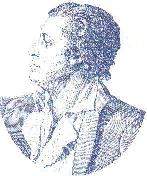The directory «Plots»
Dubois-Crance Edmond Louis
(1747—1814)

French Revolutionist, born at Charleville,was at first a musketeer, then a lieutenant of the marchaux,or guardsmen of the old rgime. He embraced liberal ideas, and in 1789 was elected deputy to the states-general bythe third estate of Vitry-le-Francois. At the Constituent Assembly, of which he was named secretary in. November 1789, he busied himself mainly with military reforms. He wished to see the old military system, with its caste distinctions and its mercenaries, replaced by an organization of national guards in which all citizens should be admitted. In his report, on the 12th of December 1789, he gave utterance for the first time to the idea of conscription, which he opposed to the recruiting system of the old rgime. His report Was not, however, adopted. He succeeded in securing the Assemblys vote that any slave who touched French soil should become free. After the Constituent, Dubois-Cranc was named marchal de camp, but he refused to be placed under the orders of Lafayette and preferred to serve as a simple grenadier. Elected to the Convention by the department of the Ardennes, he sat among the Montagnards, but without following any one leader, either Danton or Robespierre. In the trial of Louis XVI. he voted for death without delay or appeal. On the 21st of February 1793 he was named president of the Convention. Although he was a member of the two committees of general defence which preceded that of public safety, he did not belong to the latter at its creation. But he composed a remarkable report on the army, recommending two measures which contributed largely to its success, the rapid advancement of the lower officers, which opened the way for the most famous generals of the Revolution, and the fusion of the volunteers with the veteran troops. In. August 1793 Dubois-Cranc was designated representative on mission to the army of the Alps, to direct the siege of Lyons, which had revolted against the republic. Accused of lack of energy, he was replaced by G. Couthon. On his return he easily justified himself, but was excluded from the Jacobin club at the instance of Robespierre, before whom he refused to bend. Consequently he was naturally drawn to participate in the revolution of the 9th of Thermidor of the year II., directed against Robespierre. But he would not join the Royalist reaction which followed, and was one of the committee of five which had to oppose the Royalist insurrection of Vendmiaire. It was also during this period that Dubois-Cranc was named a member of the committee of public safety, then much reduced in importance. After the Convention, under the Directory, Dubois-Cranc was a member of the Council of the Five Hundred, and was appointed inspector-general of infantry; then, in I ~99, minister of war. Opposed to the coup detat of the 18th of Brumaire, he lived in retirement during the Consulate and the Empire. He died at Rethel on the 29th of June 1814. His portrait stands in the foreground in j. L. Davids celebrated sketch of the Oath of the Tennis Court.
Burkina Faso, 1989, The Tennis Court Oath
France, 1939, The Tennis Court Oath
France, 1989, The Tennis Court Oath
Madagaskar, 1989, The Tennis Court Oath
Maldives, 1990, The Tennis Court Oath
Pakistan, 1989, The Tennis Court Oath
Rwanda, 1990, The Tennis Court Oath
Togo, 1989, The Tennis Court Oath
UNO (Geneva), 1992, The Tennis Court Oath